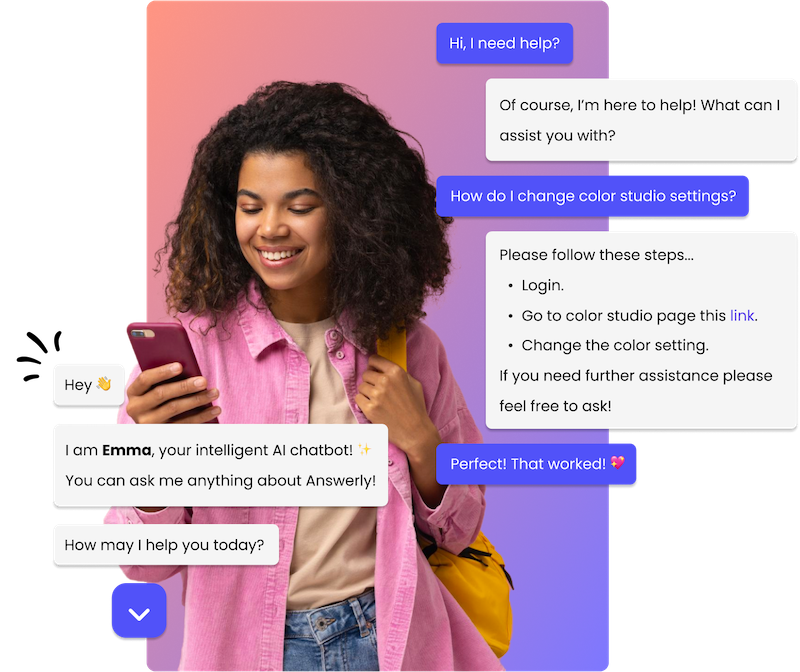Understanding Natural Language Processing
Understanding natural language processing is essential for anyone interested in AI assistants and their capabilities. Natural language processing (NLP) is a branch of artificial intelligence that focuses on the interaction between computers and humans, allowing machines to understand, interpret, and respond to human language. NLP enables AI assistants to comprehend and analyze human speech, text, and even emotions, making them more intuitive and user-friendly.
With NLP, AI assistants can perform a wide range of tasks. They can answer questions, provide recommendations, schedule appointments, and even carry out complex conversations. By understanding the nuances of human language, AI assistants can accurately interpret user commands and provide relevant and meaningful responses.
One key aspect of NLP is called natural language understanding (NLU). NLU involves the ability to comprehend the meaning behind the words, taking into account context, syntax, and semantics. This allows AI assistants to understand user queries and extract the necessary information to fulfill their requests.
Another important component of NLP is natural language generation (NLG), which involves the ability to generate human-like responses. NLG allows AI assistants to communicate with users in a way that feels natural and conversational. This makes interactions with AI assistants more engaging and enjoyable.
How AI Assistants Process Language
To better comprehend how AI assistants process language, it's important to explore the underlying mechanisms that enable them to understand and respond to human communication. Here are three key ways AI assistants process language:
- Natural Language Understanding (NLU): AI assistants use NLU to extract meaning from spoken or written language. They break down sentences into smaller components, such as words and phrases, and analyze them to understand the intent and context of the user's message.
- Semantic Analysis: AI assistants employ semantic analysis to understand the relationships between words and phrases in a sentence. By analyzing the syntax and semantics, they can accurately interpret the intended meaning and respond accordingly.
- Machine Learning: AI assistants use machine learning algorithms to improve their language processing capabilities over time. By training on vast amounts of data, they learn to recognize patterns and make accurate predictions about language usage, enabling them to provide more accurate and personalized responses.
Through these mechanisms, AI assistants are able to understand and process language in a way that simulates human-like comprehension. This allows them to engage in meaningful conversations and provide helpful information or perform tasks for their users.
NLP Techniques for AI Assistants
AI assistants leverage various NLP techniques to enhance their language processing capabilities. One commonly used technique is tokenization, which involves breaking down a sentence into individual words or tokens. This helps the AI assistant understand the structure and meaning of the sentence.
Another technique is part-of-speech tagging, where each word is assigned a specific part of speech, such as noun, verb, or adjective. This helps the AI assistant analyze the grammatical structure of the sentence.
AI assistants use named entity recognition to identify and categorize named entities, such as names, dates, and locations. This enables the assistant to provide more accurate and relevant responses.
Sentiment analysis is another powerful NLP technique employed by AI assistants. It allows them to understand the emotional tone of a text, which can be valuable in customer service interactions or social media monitoring.
AI assistants utilize language modeling techniques to generate coherent and contextually relevant responses. These techniques involve predicting the next word or sentence based on the given input.
Benefits of Natural Language Processing in AI Assistants
By harnessing the power of natural language processing, AI assistants revolutionize the way they understand and respond to human language, leading to a multitude of benefits.
Here are three key advantages of incorporating natural language processing into AI assistants:
- Enhanced User Experience: Natural language processing allows AI assistants to understand and interpret human language in a more accurate and intuitive manner. This enables them to provide more personalized and relevant responses, making interactions with AI assistants feel more natural and seamless. Whether it's answering questions, providing recommendations, or assisting with tasks, AI assistants equipped with natural language processing can deliver a superior user experience.
- Improved Efficiency: Natural language processing enables AI assistants to process and analyze large amounts of textual data quickly and accurately. This allows them to perform tasks more efficiently, such as extracting relevant information from documents, summarizing content, or conducting sentiment analysis. By automating these processes, AI assistants can save time and effort for both users and businesses.
- Better Decision-Making: With natural language processing, AI assistants can analyze and extract valuable insights from unstructured data, including customer feedback, reviews, or social media posts. This information can be used to generate actionable insights and support decision-making processes. By providing businesses with a deeper understanding of customer sentiments, preferences, and behaviors, AI assistants can help drive strategic decision-making and enhance overall business performance.
Challenges in Implementing NLP for AI Assistants
Implementing natural language processing (NLP) for AI assistants poses several challenges that need to be addressed for optimal performance and accuracy.
One major challenge is the ambiguity of human language. NLP algorithms struggle to accurately interpret language nuances, slang, and context. This can lead to misinterpretations and incorrect responses from the AI assistant.
Different languages and accents further complicate the process, as NLP models trained on one language may not perform well with others.
New words, phrases, and slang emerge regularly, making it challenging for NLP models to keep up. This requires regular updates and improvements to the underlying algorithms and training data.
Building accurate NLP models requires large amounts of annotated data, which can be time-consuming and expensive to acquire.
Ensuring data privacy and security is crucial, as AI assistants often handle sensitive information. Balancing the need for accurate language understanding with privacy concerns is a challenge that developers must navigate.
Frequently Asked Questions
How Does Understanding Natural Language Processing Benefit AI Assistants in Understanding User Queries Better?
Understanding natural language processing helps AI assistants better understand user queries. It allows them to analyze and interpret human language, making interactions more efficient and accurate.
What Are Some Common NLP Techniques Used by AI Assistants to Process and Interpret User Language?
Some common NLP techniques used by AI assistants to process and interpret user language include sentiment analysis, named entity recognition, part-of-speech tagging, and language modeling. These techniques help improve understanding and response accuracy.
How Do AI Assistants Utilize Natural Language Processing to Provide Personalized Responses and Recommendations?
To provide personalized responses and recommendations, AI assistants utilize natural language processing. It enables them to understand and interpret your language, allowing them to tailor their responses based on your preferences and needs.
What Are the Major Challenges Faced in Implementing NLP for AI Assistants, and How Are They Overcome?
The major challenges faced in implementing NLP for AI assistants are understanding context, dealing with ambiguity, and handling user errors. These challenges are overcome through advanced algorithms, machine learning, and continuous improvement.
Can You Provide Examples of Real-World Applications Where Natural Language Processing Has Significantly Improved AI Assistant Performance?
In real-world applications, natural language processing has greatly enhanced AI assistant performance. For instance, it has improved voice recognition accuracy, enabled more accurate language translation, and enhanced chatbot interactions with users.

